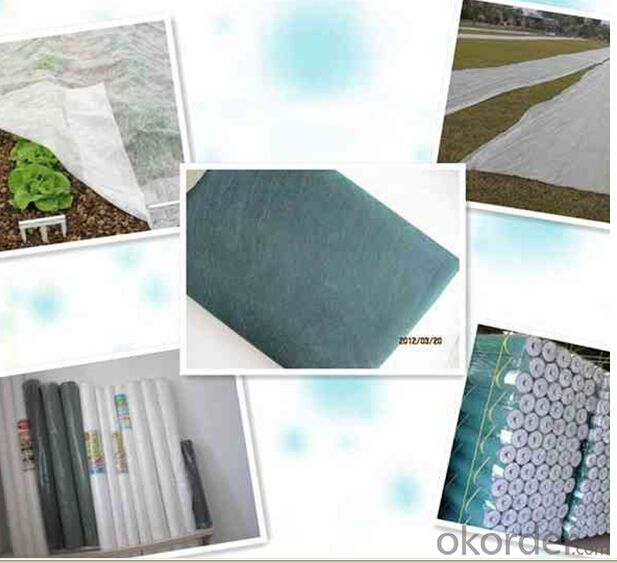- Understanding the Role of Geomembrane Liners in Waste Management
- Innovations in Geomembrane Liners for Water Management
- Geomembrane Liners: A Comprehensive Guide
- The Future of Geomembrane Liners in Civil Engineering
- Geomembrane Liners: Enhancing Landfill Stability
Manager:
WhatsApp:+86 177 0135 2670
Tel:+86 177 0135 2670
Email:marketing@okorder.com
Address:3rd Floor, No.2 Building, No.1 Sanlihe Road
The Durability of Geomembrane Liners in Harsh Environments
Geomembrane liners are a crucial component in many engineering projects, from waste containment to water management systems. They are designed to provide a barrier that prevents the leakage of liquids and gases, protecting the environment from potential contamination. However, these liners are often subjected to harsh environments that can affect their durability and performance. In this article, we will explore the factors that influence the durability of geomembrane liners and the strategies that can be employed to enhance their longevity in challenging conditions.

The Role of Geomembrane Liners
Geomembrane liners are typically made from high-density polyethylene (HDPE), linear low-density polyethylene (LLDPE), or polyvinyl chloride (PVC). These materials are chosen for their excellent chemical resistance, flexibility, and ability to withstand various environmental stresses. The liners are used in a variety of applications, including landfills, reservoirs, and canal linings, where they play a critical role in preventing the escape of pollutants and maintaining the integrity of the structure.
The Challenges of Harsh Environments
Despite their robustness, geomembrane liners face several challenges in harsh environments. These include exposure to extreme temperatures, ultraviolet (UV) radiation, chemical attacks, and physical abrasion. Each of these factors can compromise the liner's integrity and lead to a reduction in its service life. For instance, prolonged exposure to UV radiation can cause the material to degrade, while exposure to certain chemicals can lead to corrosion or dissolution of the liner.
Factors Affecting Durability
Several factors can influence the durability of geomembrane liners in harsh environments. These include:
- Material Selection: The choice of material is paramount. Some materials are more resistant to UV radiation and chemical exposure than others.
- Thicknes: A thicker liner can provide additional protection against physical damage and environmental stressors.
- Installation Quality: Proper installation is essential to ensure that the liner is free from defects and that seams are sealed effectively.
- Maintenance Practices: Regular inspection and maintenance can help identify and address potential issues before they become critical.
- Environmental Conditions: The specific environmental conditions, such as the presence of aggressive chemicals or extreme temperatures, can have a significant impact on the liner's lifespan.
Enhancing Durability
To enhance the durability of geomembrane liners in harsh environments, several strategies can be employed:
- UV Stabilization: Adding UV stabilizers to the material can help protect the liner from the harmful effects of sunlight.
- Chemical Resistance: Choosing materials with inherent resistance to the specific chemicals present in the environment can prevent chemical degradation.
- Seam Strength: Ensuring that seams are strong and well-sealed is crucial to prevent leaks and maintain the integrity of the liner.
- Temperature Management: Implementing measures to manage temperature fluctuations can help reduce the risk of material failure due to thermal stress.
- Physical Protection: Providing additional layers of protection, such as Geotextiles or protective covers, can help shield the liner from physical abrasion and impact.
The Future of Geomembrane Liners
As technology advances, new materials and techniques are being developed to improve the durability of geomembrane liners. Innovations such as nanotechnology and the incorporation of self-healing properties are on the horizon, promising to extend the service life of these liners even further.
Conclusion
Geomembrane liners play a vital role in protecting the environment from contamination in various engineering projects. While they face numerous challenges in harsh environments, understanding the factors that affect their durability and employing strategies to enhance their longevity can significantly improve their performance. By staying informed about the latest advancements in material science and engineering practices, we can ensure that geomembrane liners continue to serve us effectively for many years to come.
- Previous:Geomembrane Liners in the Construction of Canals and Ditches
- Next:Advances in Geomembrane Liner Technology
-
2024-12-05Geomembrane Liners: A Comprehensive Guide






